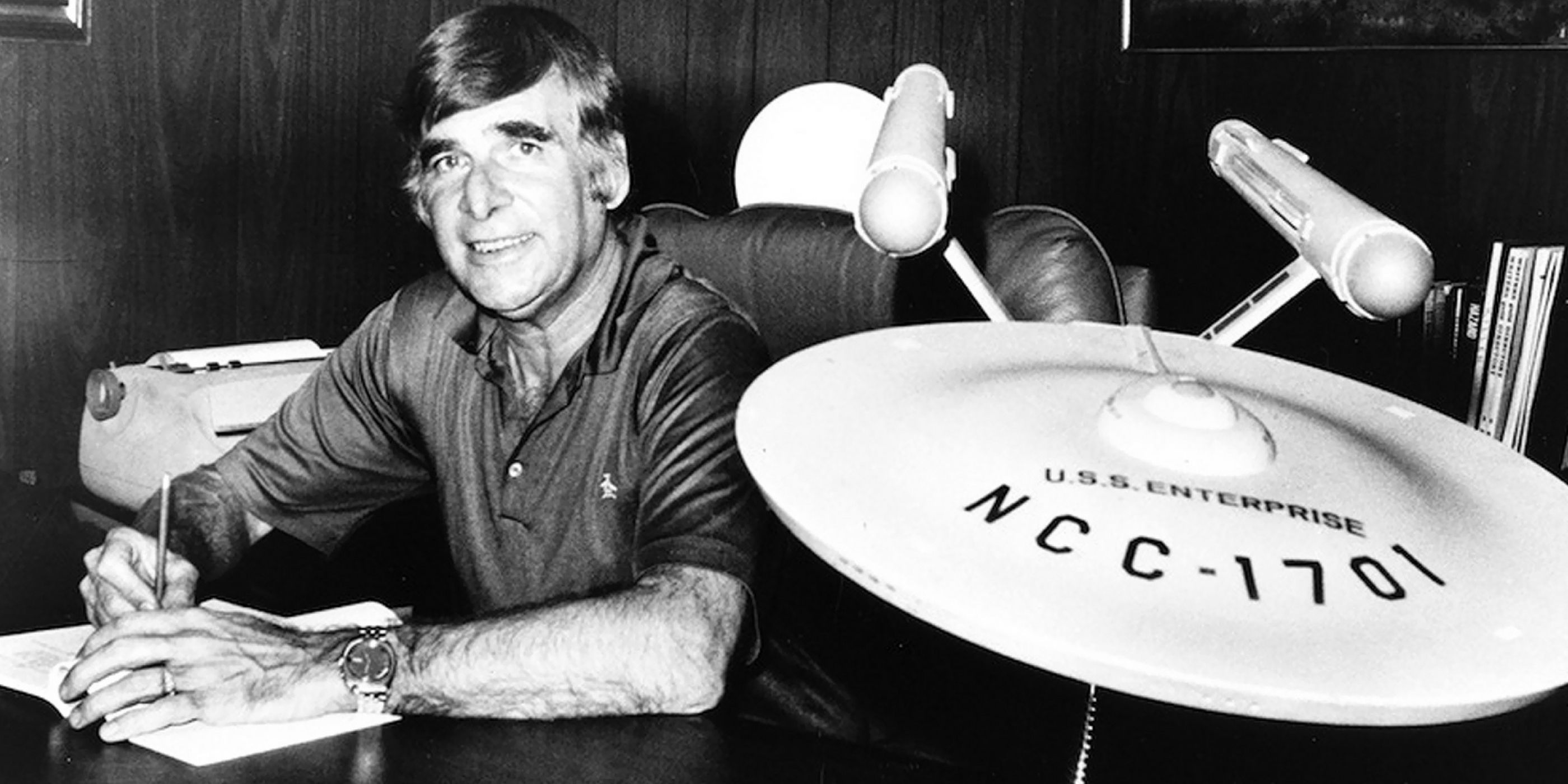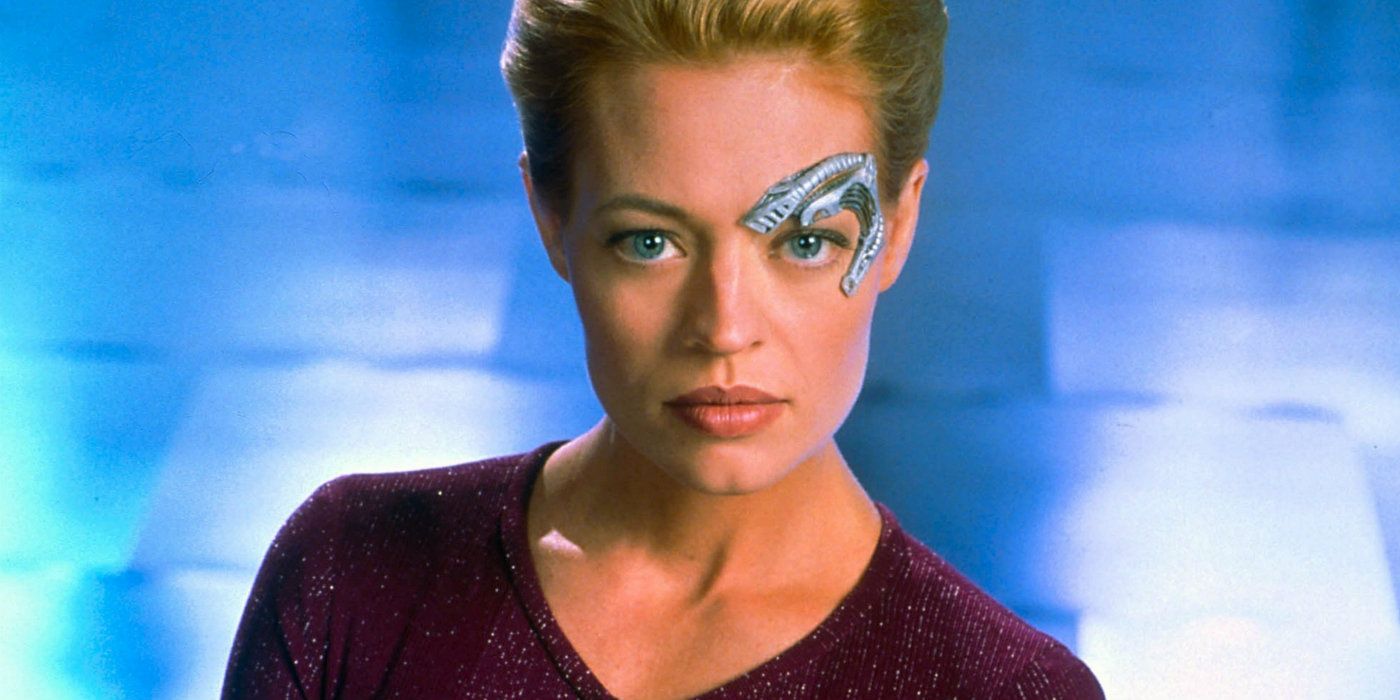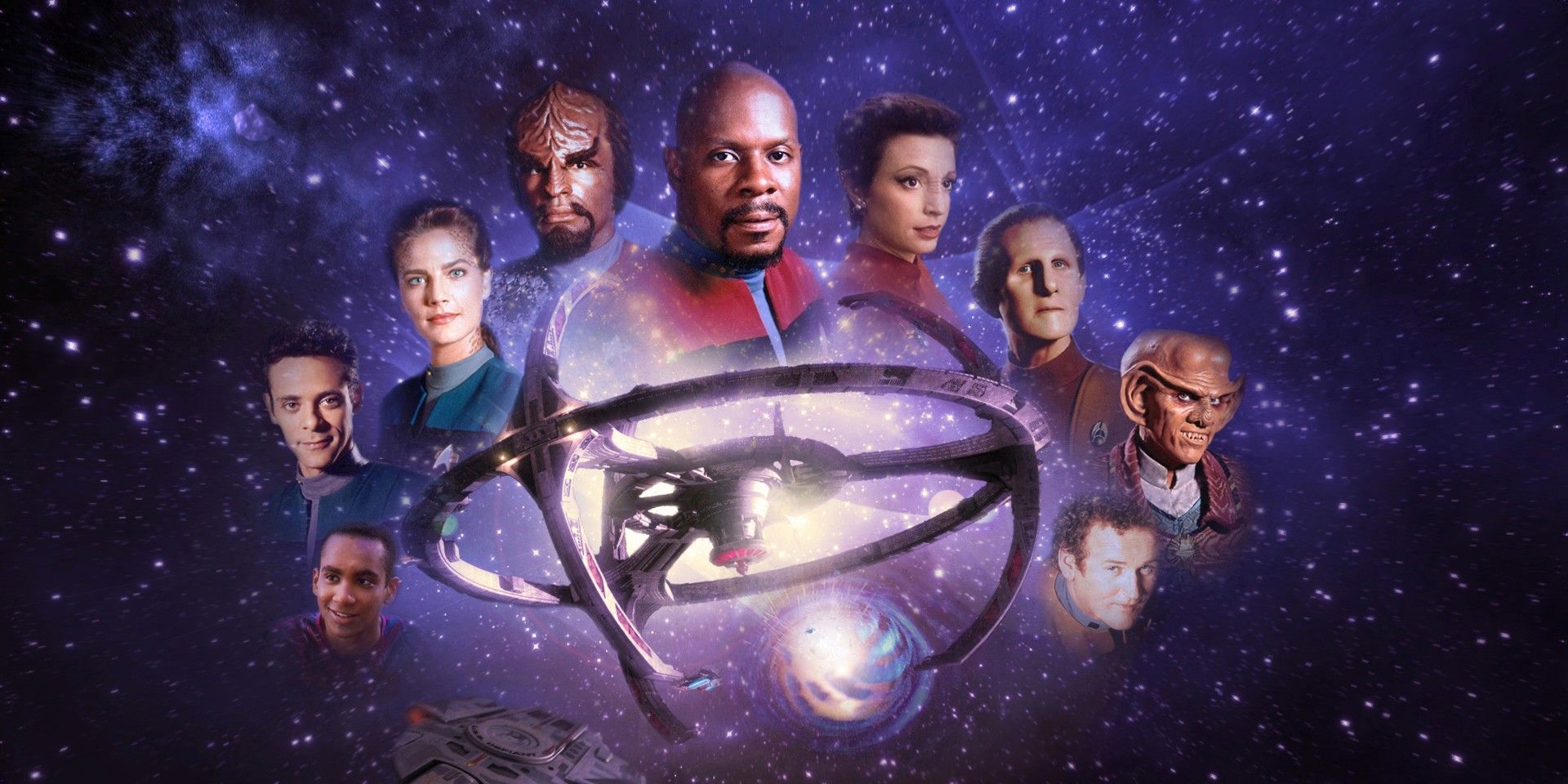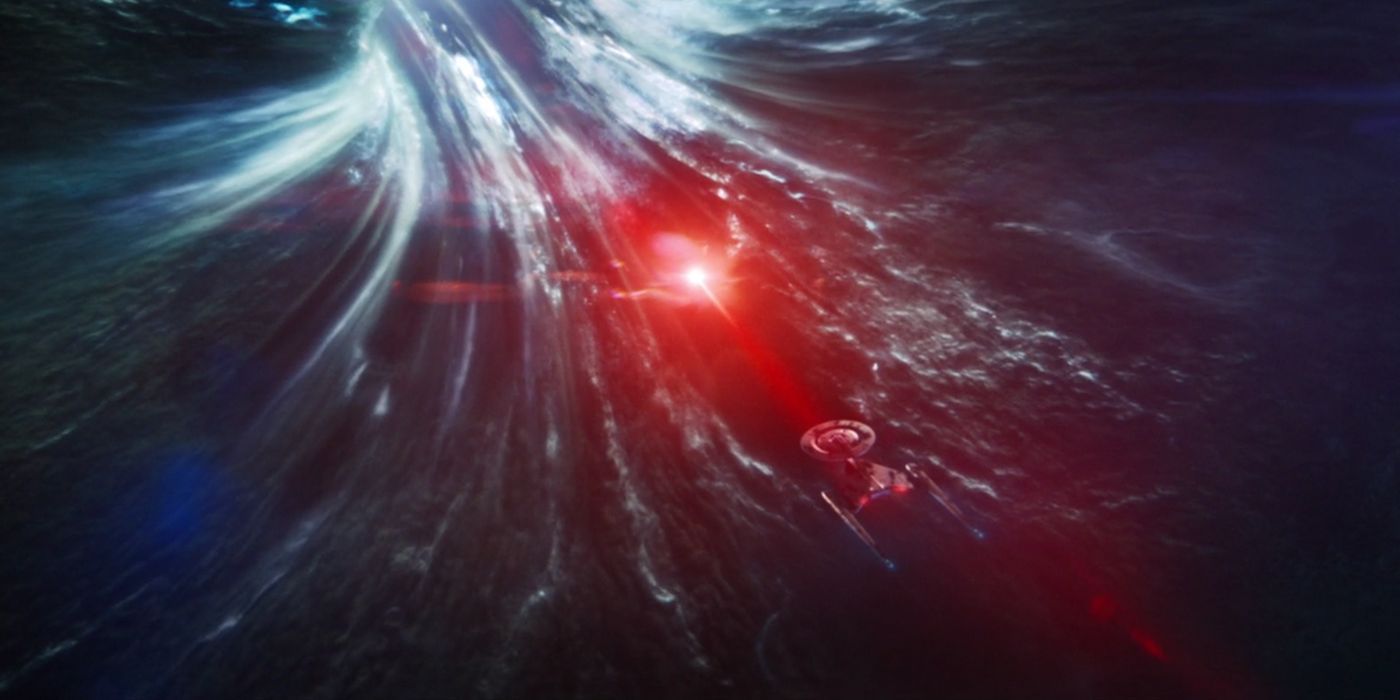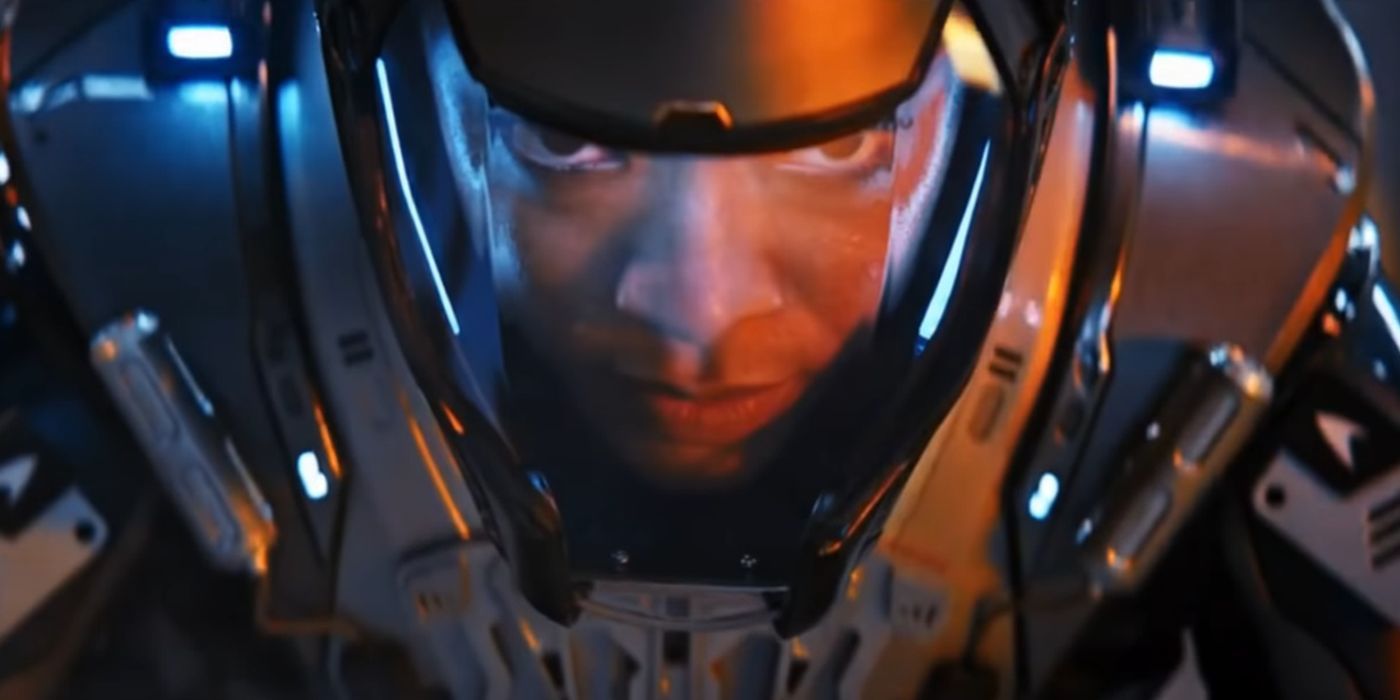Star Trek: Discovery ended season 2 by upending one of the franchises most heavily leaned-on tropes. By sending the USS Discovery 950 years into the future (and about 50,000 light years from home), Star Trek took the reset button used by earlier series to keep stories contained within a single episode and employed it brilliantly to flip the show’s premise. Previously, the reset device had been used to ensure game-changing developments just like that one wouldn’t happen.
From the start, Star Trek: Discovery faced its fair share of naysayers due to its bold changes in format and additions to Star Trek canon. Instead of a the traditional ensemble structure, which up until 2017 had featured a captain (or commander) leading a crew of supporting cast, Star Trek: Discovery debuted focusing on a disgraced lieutenant with her fellow cast members pulled from "lower decks" positions rather than the senior staff that typically rounded out Star Trek casts.
Another huge development was the embrace of fully serialized storytelling in place of the strict episodic style that nearly other every series had followed. Those two major adjustments created a new iteration of the franchise that reflected the massive evolution television underwent in the near two decades since Star Trek had a show on the air. Discovery is the first Star Trek series not to take place in front of the static backdrop of a starship that never promoted anybody. The lack of safety net inherent in its makeup automatically raised the stakes and brought Star Trek roaring into the age of prestige television. This isn't to say the episodic nature of previous series wasn't necessary and functional at the time, just that Discovery shed an old tradition at the perfect time.
- This Page: Why Star Trek Had A Reset Button
- Page 2: Deep Space Nine Abolished The Reset Button - Why?
- Page 3: Discovery Completely Flipped The Idea Of A Reset Button
Star Trek Reset Button Was a Cornerstone of the Franchise Due to Syndication
NBC cancelled the Original Series after only three seasons, but the show went to serve as a defining example of the power of syndication in the years immediately following. Paramount’s to thank for that – after purchasing Desilu Studios, they licensed Star Trek for syndication and said syndication proved to be one of the most profitable signal boosts in history. The foundations of Star Trek’s longevity were laid down in the '70s when reruns aired with enough regularity in enough markets to pull in a huge cult fanbase and generate no small amount of hype. Eventually that noise helped Gene Roddenberry reignite the franchise with feature films and Star Trek: The Next Generation, ultimately creating an unprecedented legacy within sci-fi television and film. Star Trek has enjoyed a long and prosperous life due to its fans, and many of those fans started their love affair with the after it had actually aired. When it comes to Star Trek, the importance of syndication cannot be understated – it's the way most fans watched in the first place.
While Star Trek: The Next Generation was a huge mainstream success, it and Deep Space Nine were both aired in syndication until Paramount launched UPN and used the network as a home for Star Trek: Voyager and Star Trek: Enterprise. Part of the reason syndication worked so well for Star Trek, historically, is because not only was the show extremely available, but it was also accessible to fans at virtually any point in the series. That's next to impossible to do with most shows today - imagine jumping into Game of Thrones season 8 with no preamble. But it’s important to remember that serialized storytelling is a concept that has only reached mainstream popularity in the last two decades, and had it been around when Star Trek first went into syndication, the franchise might have enjoyed the same fervent success. The near procedural-style of Star Trek and Star Trek: The Next Generation especially allowed the franchise to gobble up more fans and faster, which turned out to be a key component of its survival. Hence the birth of the Star Trek Reset Button.
Writers were directed to keep each episode unrelated and only introduce major paradigm shifts when absolutely necessary. For example, very few actors left Star Trek because of a narrative-based decision, but rather the shows were forced to explain an actor’s decision not to renew a contract or sign a longer one. In the case of Star Trek: Voyager, despite Deep Space Nine’s foray into serialized stories, the show was under direct orders from Paramount to keep stories bottled in a single episode so that viewers could hop onto the series at any point in its run, just as they had done with its predecessors. It’s why, despite whatever developments happened in a single episode or even a two-parter, almost always TOS, TNG, and Voyager were “reset” to factory settings at the end of an episode or arc. Everyone kept the same job, the same relationships, and the same characterization story to story, no matter what had happened to them the week before. It was a move that did, without a doubt, allow more fans to come to the series as it progressed and grew in popularity, but the reset button also inhibited creativity.
Page 2 of 3: Deep Space Nine Abolished The Rest Button - Why?
Reset Buttons Started To Strangle Story
The biggest problem with eschewing serialized storytelling is that stakes are often eschewed right along with it. This isn’t to say Star Trek didn’t create incredibly compelling drama in single episodes – it very much did. But when characters can’t go through important, game-changing experiences, or when plot armor is so obvious, it’s hard to have cliffhangers that resonate to their fullest. As effective as the last scene in “Best of Both Worlds Pt. I” continues to be, there was no way Jean-Luc Picard wasn’t going to be fine come season 4, short of an announcement that Patrick Stewart was leaving. And, sure enough, after one episode that addressed the trauma he’d gone through, the captain was largely back to his old self, aside from when the Enterprise would encounter the Borg once more in episodes like “I, Borg” and “Descent Pts. I and II.”
We could trust – at least in TNG – that whatever the Enterprise D encountered, she’d endure very little lasting damage. While there’s a comfort in knowing fan-favorite characters will show up consistently and won’t be violently ripped out for the sake of dramatic effect, there’s a reason Battlestar Galactica was as groundbreaking a hit as it was. It took a Star Trek-esque premise and threw the reset button out the window – mass genocide is committed in the first episode, and the only ship and character with any real plot armor was the Galactica herself, and even she barely made it to the end of the series. People died, changed values, left jobs, left marriages – in general, reacted truthfully to the environment around them as opposed to what Star Trek: Voyager became under Paramount’s watchful eye – TNG in the Delta quadrant.
One of the many criticisms Voyager received – from former DS9 showrunner and BSG creator himself, Ron Moore – was that it was a ship in the Delta Quadrant with virtually no infrastructure or support, presumably lost forever in unfriendly territory, yet it looked pristine and seemed filled with mostly emotionally well-balanced people. Had Voyager been allowed to suffer more realistic pitfalls of being so far from home and beset upon by enemies - in short, have problems like scarcity, equipment failures, and mental illness that couldn’t be solved in one episode - it’s likely we would’ve gotten a very different and perhaps more compelling series.
Related: Star Trek: 8 Casting Decisions That Hurt DS9 (And 12 That Saved It)
But considering Deep Space Nine’s relatively lukewarm reception, despite the incredible narrative heights it achieved, it’s not totally surprising Paramount insisted episodic television be the rule when it came to Voyager. That said, there’s an argument to be made that DS9’s serialized nature is exactly what has brought renewed attention to the series as it ages.
DS9 Broke the Mold, Which is Part of the Reason It Endures
Aside from a few noteworthy exceptions, TNG employed next to no serialized storytelling. Comparatively, Deep Space Nine was defined by it. The primary example cited by most is the Dominion War arc that dominated the back half of the series, but in general, Deep Space Nine had always favored ongoing storylines simply because most of its action takes place in a stationary location. The literal space station sat in the middle of the aftermath of the Cardassian War and its brutal occupation of the planet Bajor. DS9 served as window into galactic politics in a more complete way than TNG or the Original Series had ever attempted. Stories certainly differed significantly episode to episode, but the ever-evolving political backdrop always lingered in the background as we watched Bajor rebuild its infrastructure, with the Cardassians attempting to manage their new, less powerful position, and humans in the middle of it all trying to get everyone to play nice.
Because serialized storytelling was one of its building blocks from the inception, the later seasons had a good foundation on which to rest the Dominion War arc and produce some of Star Trek’s finest episodes. It’s also why the series has aged so well and has enjoyed renewed popularity with the advent of streaming. There was still a reset button on Deep Space Nine, but stories like Nog dealing with the loss of his leg and the PTSD that came along with it, and Worf’s grief at the loss of Jadzia in season 7, showed the series' ability to evolve beyond the episodic tradition that came before it. That evolution was unquestionably for the better, and Star Trek: Discovery just doubled down on it.
Page 3 of 3: Discovery Completely Flipped The Idea Of A Reset Button
Star Trek: Discovery Evolved the Concept, And Flipped It
Discovery is the least episodic series in the franchise by a mile, and as stated previously, has been defined by favoring season-long arcs that deal with the consequences of decisions and actions in an unprecedented way (for Star Trek). The choice to send the Discovery 950 years into the future and erase the possibility of its return not only sewed up loose ends with Star Trek canon, but it also reinvented a Star Trek series in a wholly new way. The reset button was definitely hit, but instead of returning to the homeostatic normalcy that defined a show like TNG, Discovery gave itself a true final frontier to explore.
Not only will Discovery wind up in a largely unexplored quadrant, they will land in a completely unexplored time period. After 50 years, Star Trek will explore further into its own future than we’ve ever seen outside of the Temporal Cold War storyline on Enterprise. Since the Kelvin movies premiered in 2009 with a reimagining of the Original Series, not to mention the announcement that Discovery would take place ten years before the events of TOS, a decent-sized contingent of fans expressed frustration that it had been way too long since Star Trek had developed “new” material.
As enjoyable as many of the nostalgic callbacks in Discovery have been, the show’s never really been about scientific discovery in the way the previous series were. Its heavily serialized premise and significantly shorter seasons meant there would be less opportunity to explore certain topics, and its place in the Star Trek timeline (not to mention its launch in an age of nostalgia) ensured it would be somewhat forced to reintroduce familiar faces and conceits. Why put the show ten years before TOS and take advantage of the opportunity to revisit iconic characters like Spock, or fill out underrepresented but significant characters like Christopher Pike? Discovery season 2, and much of season 1, felt like a study in how to do this the right way, despite the remaining fervent fan objections to Spock’s new sister as well as Discovery’s canonical conflicts and design choices. That said, as much as we like Pike and how fluidly the character of Michael Bunrham was written into Spock’s greater characterization, a key element of Star Trek the show was missing is written right into its name: discovery.
Because the Discovery ship was so intertwined into the continuing mysteries of the Red Angel and the signals that appeared to follow her, that’s where the narrative focus remained, at the expense of strange new worlds, new life and new civilizations. Case in point: the ship travels to an incredibly remote part of the galaxy, only to find… more humans. Discovery was shaping up to be a canvas for nostalgia, not a series that had its own original contribution to make to the Star Trek legacy. That’s why it’s incredibly exciting that the showrunners chose to abandon the nostalgia that’s defined so much of the show in favor of what's an almost completely blank slate. It’s a choice that could signal the onset of a big evolution for the franchise, and we’ve seen that once before exercised with great success.
When The Next Generation premiered in 1986, reactions from fans to the entirely new cast and time period were mixed. In fine Star Trek fashion, fans literally took to the streets to express their displeasure at the idea to not bring back Kirk and the original Enterprise crew. But what was a very risky decision proved to be one that only further solidified Star Trek’s position as a beloved and historic part of pop culture.
It’s big risks like that that allow shows and franchises the opportunity to transcend their original programming and (hopefully) become something greater than the original premise. It deepens our investment when we know not everyone will be safe and sound at the end of the day – that actions and decisions have real consequences, just like in real life. Ultimately that kind of storytelling is more reflective of human experience, and thus typically makes for much better drama. There’s a reason the Red Wedding put Game of Thrones on the map for so many people – when you change the rules so drastically in any narrative, people pay attention. Discovery just threw the rulebook out the window and there’s reason to believe that’s the best thing Star Trek’s done for itself since introducing the Borg.


